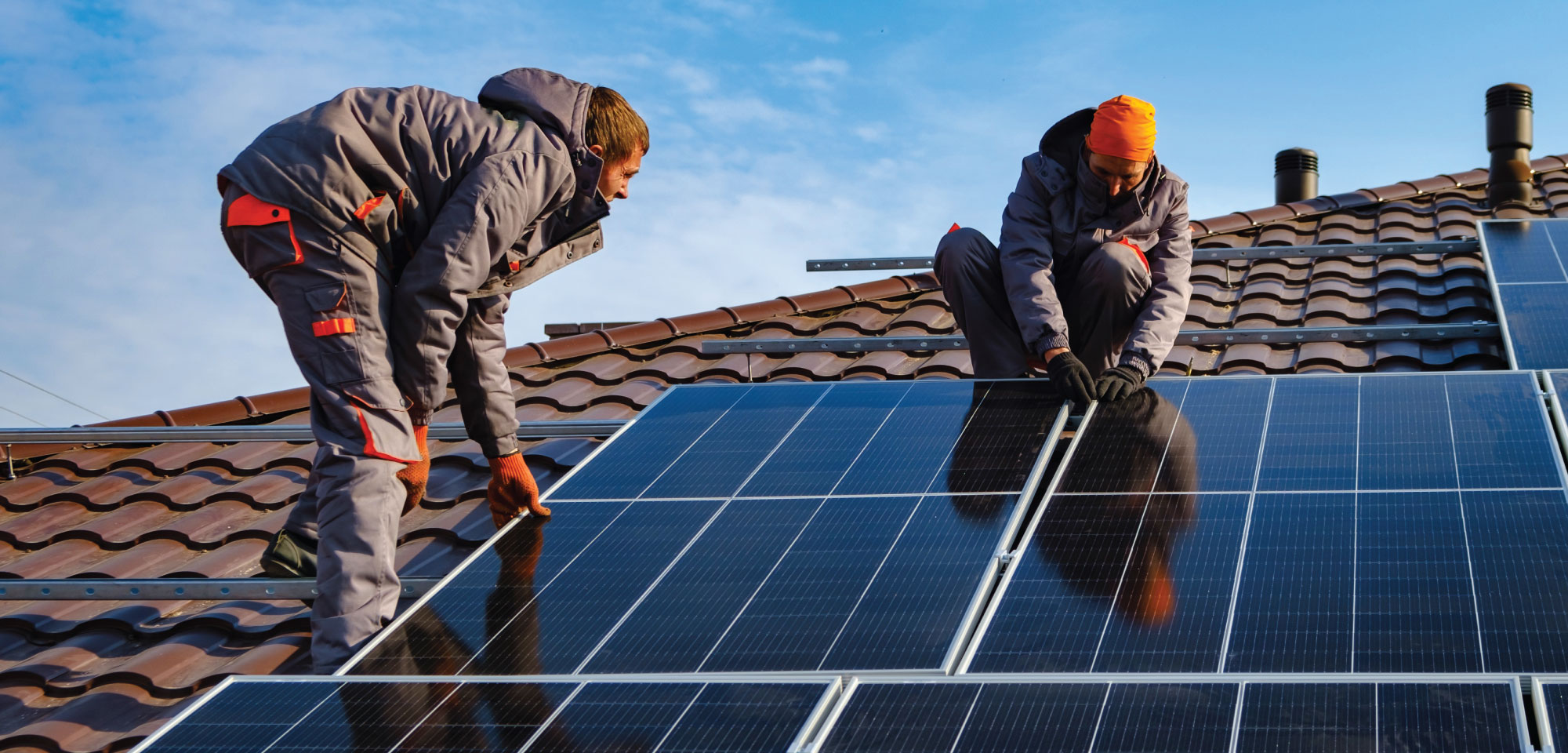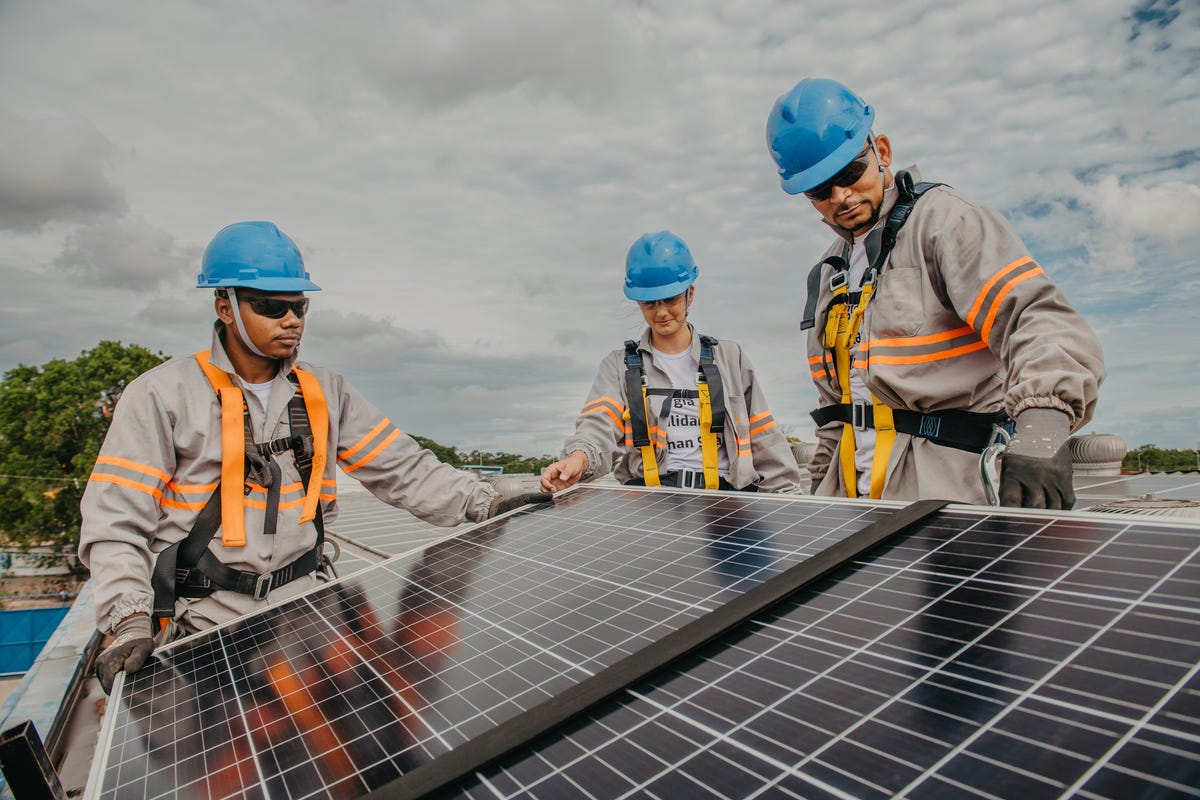The Basic Principles Of Solar Companies In Virginia
The Basic Principles Of Solar Companies In Virginia
Blog Article
Virginia Off-Grid Solar Systems: Lumina Solar Concentrates On Supplying Advanced Photovoltaic Solutions For Residences And Businesses
History and Founding
Have you ever questioned how a photovoltaic panel business springs from a simple trigger of inspiration into a powerhouse of renewable energy? It typically begins with a vision-- one fueled by a blend of innovation, determination, and a pinch of serendipity. The journey of many solar business mirrors the advancement of the innovation itself: from bulky, inefficient panels to sleek, high-efficiency marvels utilizing the sun's bounty.
The Early Days
In the late 20th century, when solar power was still a specific niche concept, pioneers planted seeds for what would end up being a global motion. Envision a little workshop filled with curious engineers, relentlessly explore photovoltaic cells. Their passion was palpable, often driven by a desire to combat environment modification and lower dependence on nonrenewable fuel sources.
One such anecdote is about a founder who, influenced by an outdoor camping trip, understood that even in remote locations, the sun could power important devices. This basic observation sparked a company's objective to democratize access to tidy energy.
Founding Concepts

- Development: Constantly pressing the borders of solar technology to enhance performance and resilience.
- Sustainability: Devoting to environment-friendly production and lowering carbon footprints.
- Accessibility: Making renewable resource options budget friendly and practical for daily users.
Turning points in Development
| Year | Secret Event |
|---|---|
| 1985 | Business founded in a little garage, concentrating on research study and advancement. |
| 1995 | First industrial solar panel product released, gaining local attention. |
| 2005 | Expanded to global markets, welcoming international renewable energy objectives. |
| 2015 | Introduced advanced solar panel technology with boosted energy conversion. |
Isn't it remarkable how these incremental steps, typically ignored, form the energy landscape today? The photovoltaic panel company story is not almost innovation; it has to do with an unrelenting quest for a brighter, cleaner future.

Developments in Photovoltaic Panel Technologies
Ever discovered how some photovoltaic panels shine brighter and last longer? It's not magic; it's the science of photovoltaic efficiency. Modern solar panel companies invest greatly in technologies like bifacial cells, which capture sunshine from both sides, boosting energy harvest without expanding roofing system space. Have you ever wondered why some panels carry out much better on cloudy days? That is because of advances in thin-film solar technology, which thrives under diffused light conditions.
Item Variations Customized to Special Needs
One size never ever fits all. Solar panel suppliers now provide:
- Monocrystalline panels for optimum effectiveness and streamlined visual appeals, perfect for space-constrained roofs.
- Polycrystalline panels, which use an affordable option without compromising too much output.
- Building-integrated photovoltaics (BIPV), combining solar tech perfectly into architectural elements like windows and facades.
Choosing the right item isn't simply about in advance cost; it has to do with matching your environment, energy objectives, and long-lasting cost savings. Homes shaded by trees require panels that stand out in low-light scenarios, something many neglect till energy costs climb suddenly.
Technical Tips for Optimum Selection
- Assess the temperature coefficient-- lower values suggest panels lose less efficiency on hot days.
- Search for panels with improved anti-reflective coverings to make the most of light absorption.
- Consider the panel's guarantee not just for problems, however for ensured power output over decades.
- Don't ignore the value of the inverter innovation matched with the panels; it can make or break your system's efficiency.
Beyond Panels: Emerging Trends
Envision photovoltaic panels that change their angle automatically to chase the sun-- tracking systems are ending up being more available, increasing yield significantly. Or solar tiles that mix undetectably into your roofline, transforming your home into a quiet, self-sufficient power generator. These innovations are improving what a photovoltaic panel company offers-- not simply items, however integrated energy solutions.
Market Existence and Global Operations
Ever wonder why some photovoltaic panel business appear to grow up in every corner of the world while others barely make a ripple? The difference lies not just in technology however in mastering the art of navigating varied markets. Expanding worldwide is like planting seeds in different environments-- you should understand each environment's distinct conditions to prosper.
Take, for example, the intricate dance of logistics and supply chain management. Shipping panels halfway throughout the world isn't almost distance; it's about timing, customs, tariffs, and adapting to local need fluctuations. A company with robust worldwide operations expects these variables, making sure panels show up on schedule without inflating expenses. This insight is no small feat and often separates market leaders from followers.
Secret Strategies for Expanding Market Presence
- Localized production: Establishing production hubs near target markets reduces shipping hold-ups and import complexities.
- Strategic partnerships: Collaborating with local companies speeds up market penetration and builds trust.
- Adaptive item style: Tailoring solar panel tech to weather, sun intensity, and facilities nuances improves performance and approval.
What about the human element? Solar panel companies operating worldwide need to reconcile cultural distinctions and regulatory subtleties without forgeting their core objective. What works in a sun-drenched desert may fail in a damp coastal region. Sometimes, the most ingenious option is merely listening-- absorbing local insights to refine technology and approach.
Experts often recommend a phased rollout instead of a shotgun growth. Why risk overextension when measured growth develops sustainable momentum? Scaling wisely suggests balancing ambition with operational resilience - Commercial Solar Panels Virginia. In the race for sustainable energy supremacy, perseverance can be as valuable as speed.
Ecological Impact and Sustainability Practices
When photovoltaic panels initially emerged, many assumed they brought zero environmental baggage. However, the truth is more nuanced. The production of photovoltaic cells involves rare earth metals and energy-intensive procedures, which can leave a sizable carbon footprint before the panels even reach roofs. The real environmental expense depends heavily get more info on the sustainability practices used by the photovoltaic panel company throughout the lifecycle of their items.
How frequently do we stop briefly to consider what takes place to photovoltaic panels at the end of their useful life? Unlike batteries or electronics, solar panels can last 25-30 years, but disposal and recycling pathways remain underdeveloped in many areas. A business devoted to lowering environmental harm will have a robust strategy for recycling photovoltaic materials, restoring important silicon, glass, and metals to avoid land fill accumulation.
Secret Sustainability Techniques
- Utilizing low-impact production techniques that lessen water and energy intake.
- Implementing closed-loop systems to recycle production waste back into new panels.
- Engaging in transparent supply chain audits to ensure ethical sourcing of raw materials.
- Creating panels for simpler disassembly to help future recycling efforts.
It deserves keeping in mind that some solar business have pioneered innovative methods, such as integrating biodegradable components or using less harmful chemicals throughout fabrication. This not only lowers environmental strain but likewise sets a precedent for the industry. The concern stays: can the solar market truly pivot towards a circular economy model without sacrificing performance or price?
Specialist Tips for Assessing Sustainability
- Inquire about the business's dedication to carbon-neutral manufacturing and whether they balance out emissions.
- Investigate if they partner with certified recycling centers devoted to photovoltaic panel waste.
- Try to find openness reports detailing environmental effects and sustainability objectives.
- Consider the longevity and warranty of panels as an indirect step of resource effectiveness.
In the end, selecting solar energy needs to imply more than just slashing electrical power bills; it's about supporting a future where energy is gathered responsibly and waste is attentively handled. Photovoltaic panel business that welcome this viewpoint not only brighten homes however likewise cast a brighter light on sustainable innovation.
Report this page